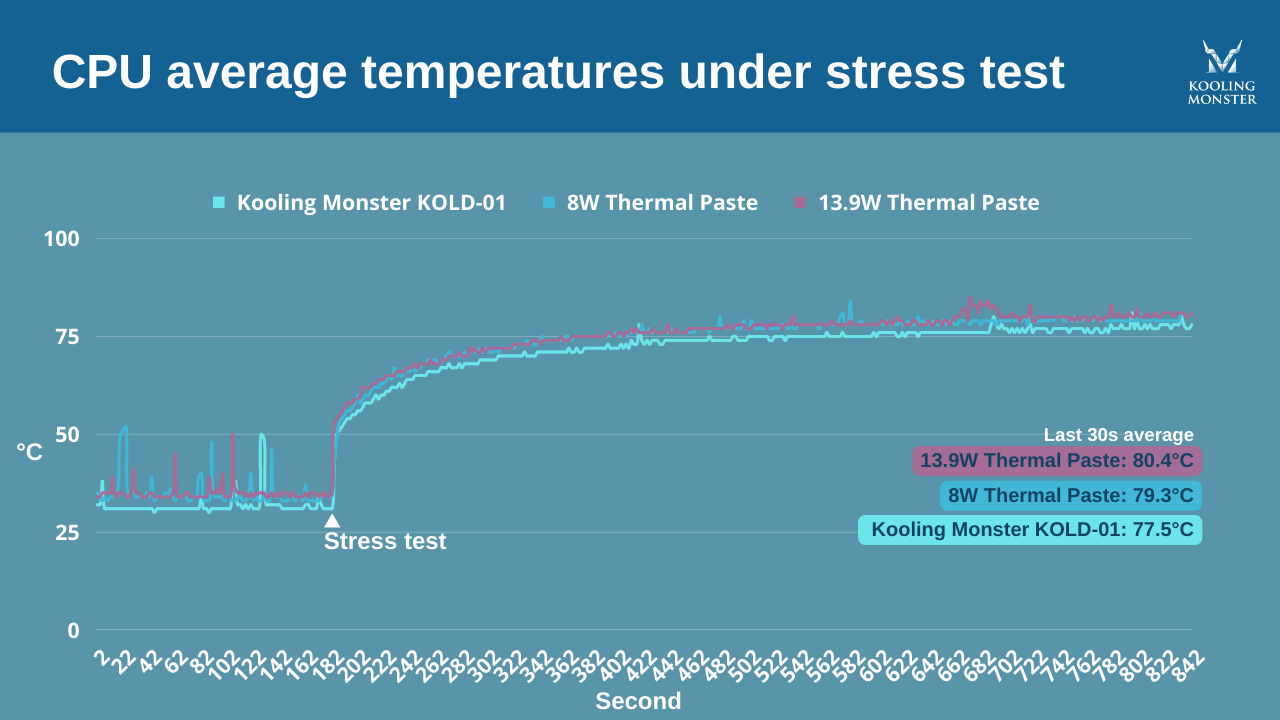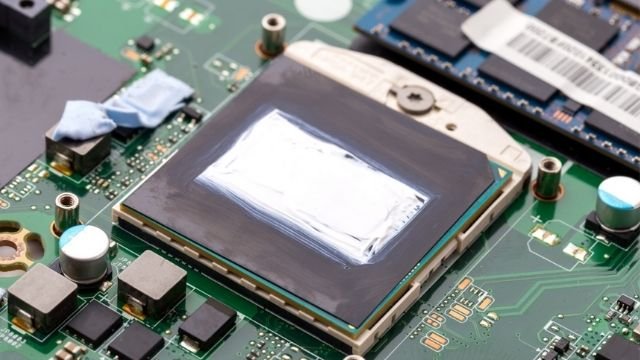What Is Thermal Conductivity and Is It Always Good for Thermal Paste?
If you’ve been reading our insights, then you know that we mention “thermal conductivity” a fair bit. We often talk about how thermal conductivity is important in thermal paste as it relates to the transmission of heat from the CPU to the heatsink or waterblock for dissipation. This is the standard process of cooling your CPU.
But what is “good” thermal conductivity and how does it relate to thermal paste? In this post we’ll be talking about just that and other aspects of what make a “good” thermal paste in terms of consistency, usage, and quality.
What is thermal conductivity of thermal paste?
To talk about what the thermal conductivity of thermal paste is, first we need to talk about what thermal conductivity is.
Thermal conductivity refers to how well a substance can allow thermal energy to pass through it under a temperature differential. At a more technical – but not too technical – level, this would depend on the substance’s availability of electrons to carry energy. This is why we use metal alloys (or pure metals like silver) in thermal paste as they have free electrons that can easily carry the heat to where it needs to go – in our case the heatsink.
(Metal alloys that are most often used in thermal paste include: aluminum oxide, boron nitride, zinc oxide, and aluminum nitride)
So what difference does this make for thermal paste? Recall that thermal paste is not just these alloys. There is also an oily (most of the time silicone) base to host them. Therefore, the more of the alloy you add to the base, the higher your thermal conductivity and the higher the ability of the thermal paste to transfer heat out to the heatsink.
This is where we crossover from theory into reality. Because most of the time our thermal paste doesn’t simply sit in a vacuum – it needs to be applied correctly and to function for long periods of time.
Thermal paste with ONLY high thermal conductivity isn't good
We did just spend a section talking about how higher conductivity equates to a higher ability to transfer heat. But unfortunately, that’s not the case.
Achieving a “high” thermal conductivity (in this case, let’s say 10W/mK+) is actually very easy – all you have to do is keep adding filler (metal alloy) until you achieve that level of conductivity. But thermal paste’s job is not solely to transfer heat – it is also a gap filler for the micro-imperfections between the surface of CPU and heatsink where oxygen might be trapped.
If you add too much filler, you risk making the thermal paste too hard to spread, resulting in thick, uneven layers which result in poorer real-life performance. And because of the lack of base, high-filler thermal pastes will also degrade significantly faster when put through real use which will quickly result in poorer performance. Notice above, though Kooling Monster KOLD-01 doesn’t have the highest thermal conductivity across the market, it spreads more evenly and is a more effective gap-filler than the market-brand thermal paste. That means it’ll be more effective at transferring heat overall and will last significantly longer.
To prove the above, we ran a case study:
We tested 2 market brand 8W/mK and 13.9W/mK thermal pastes with our own Kooling Monster KOLD-01 and compared the temperature of the CPU when under full load. (5 dots method was applied)
Test Build:
CPU: Intel Core i3-10105F
Motherboard: Asus H510M-E
Cooler: Air Cooling (Golden Field)
Memory: ADATA DDR4 (8G)
Software: HWiNFO (Measurement), AIDA64 (Stress)
As you can see by the data, when put under full load, the temperature of the CPU using our KOLD-01 is ~2°C lower than the market brand 8W/mK, and ~3°C lower than the market brand 13.9W/mK. This is because the consistency of KOLD-01 allows it to be applied thinly and in an even spread which allows better heat transfer to take place, outpacing even a higher-rated paste.
The diagram above makes it abundantly clear why choosing another thermal paste based on thermal conductivity and other factors is extremely important to how your PC is cooled.
Besides thermal conductivity, what other metrics are essential to heat transfer efficiency?
So far we’ve been talking about thermal conductivity and the spread of the thermal paste as they relate to heat transfer. However, in reality, both are a part of the real overall goal of achieving lower thermal resistance because heat transfer efficiency is actually determined by thermal resistance rather than thermal conductivity. Thermal resistance is comprised of: thermal conductivity, bond line thickness and contact resistance. Let’s go over each of them:
Thermal conductivity – as said, the ability of the substance to transfer heat between 2 environments
Bond Line Thickness – the literal thickness of the layer in which we apply the substance
Contact resistance – the types of materials used at each surface with which the substance is interacting
All of these comprise thermal resistance which can be described as the heat-conducting ability of a stack of materials. In this way, we’re talking about the entire system: CPU, thermal paste, and Heat Sink.
In this case, Bond Line Thickness – or the thickness of the layer used to apply thermal paste is especially important. The thinner the layer, the lower the thermal resistance and better heat transfer efficiency. Therefore, a thermal paste needs to be applied in a thin layer to provide the best possible heat transfer efficiency. Unfortunately, most thermal pastes employ organic solvents which, if applied in a thin layer, dry up quickly due to the high temperatures at play.
Kooling Monster KOLD-01 employs no organic solvents which makes it long-lasting, and is extremely easy to apply in a thin layer so you don’t have to worry about reapplying often.
How to achieve long-term heat transfer efficiency?
After hearing about all these technicals, one thing may be popping up in your mind: “who cares?” And you’re absolutely right. The nitty-gritty has no place in your life if there’s no real-life applications. So how do you use all this knowledge to ultimately make your PC run faster and cooler? We recommend the following:
1. Choose a good cooler/heatsink
Depending on the clock speeds you are running, you can go with an air cooler, an AIO or closed-loop liquid cooler (what’s traditionally known as water cooling), or some sort of custom-loop cooler with large radiators that can dissipate huge amounts of heat.
If you’re going for a basic setup and are looking to run a few games or watch videos on your computer, simple air cooling should do the trick. Air coolers start off a lot cheaper than liquid coolers as well, at around $20-30. If you’re planning on overclocking, gaming with high graphics or in VR, or doing intensive video editing, a high-end (read: expensive) air cooler or a liquid cooling system may be a better bet. To that end, the price point you’d be looking at is $160+. And remember the PLUS. Because liquid cooling can go well into the hundreds.
2. Use a good quality thermal paste
As we’ve explored, a good quality thermal paste is one that can be applied evenly in a thin layer without drying up under heat and one that also has excellent thermal conductivity. Kooling Monster KOLD-01 is our recommendation. Its non-organic solvent formula means it has great long-term stability without any unexpected drying and its special viscosity design ensures ease of application. And – of course – thermal conductivity. If you need to have another look at the proof, scroll up.
3. Apply your thermal paste correctly
Use any pattern of your choosing (though we recommend the “buttered toast” or “5 dots”) to apply Kooling Monster KOLD-01 evenly to the surface of your CPU. (Learn more about How to apply thermal paste to a CPU? [2022 step-by-step beginner guide])





